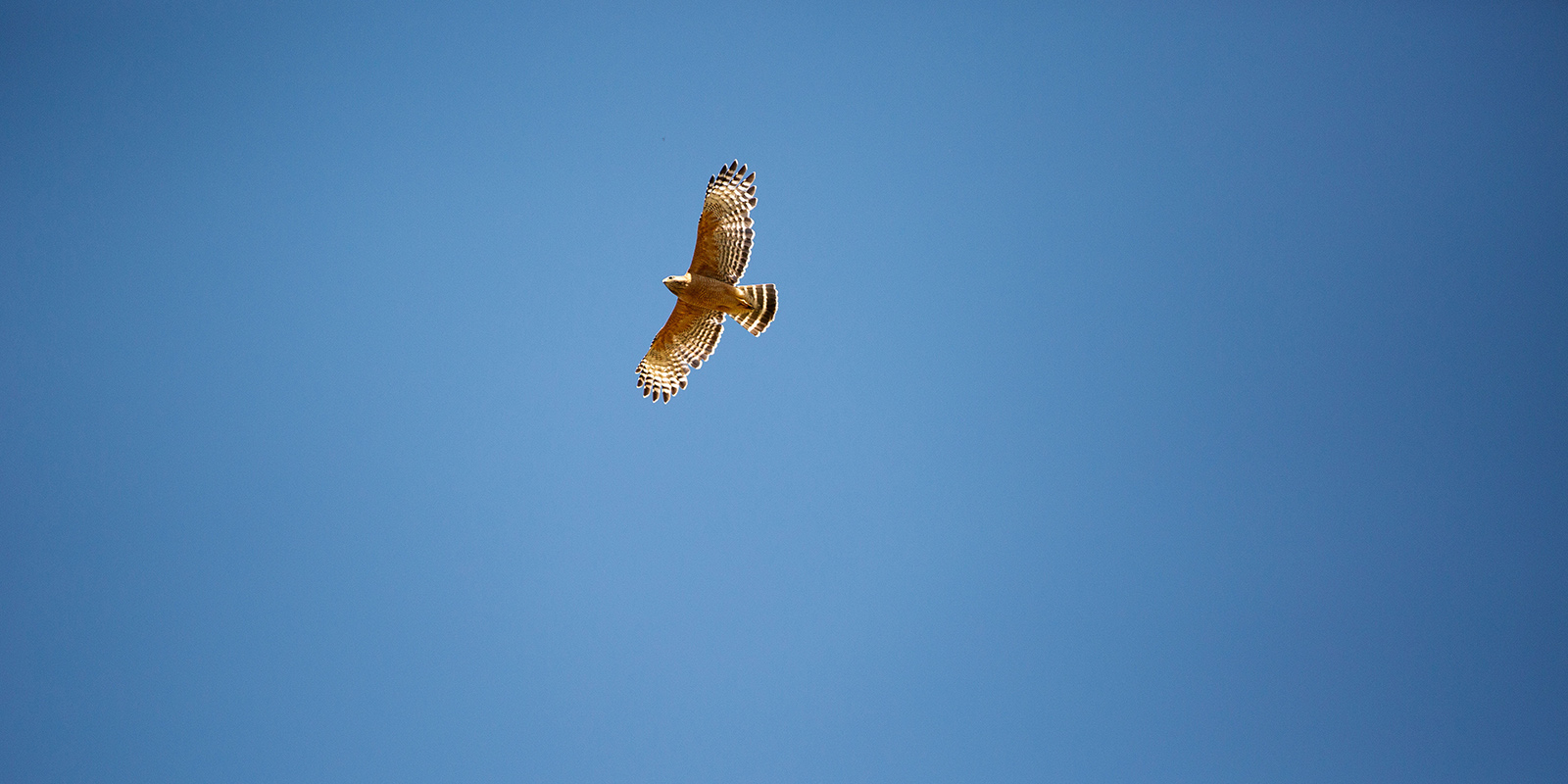Raptors: Sonoma County’s wintertime visitors
By Stephen Nett
As our seasons change from warm to cold and back again, they set in motion a gigantic, nearly invisible event across the landscape: Vast numbers of wild creatures set out on southward journeys to avoid the worst of winter weather, before turning north again in spring.
Among them are roughly 300 species of feathered travelers who fly through Sonoma County, from pelicans to hummingbirds and tiny wrens to great herons. But it is the raptors – the types of bird who hunt from the sky – who are most likely to capture our attention in wintertime skies.
Our visiting raptor species include eagles, hawks, falcons, osprey, kites, owls and a number of others. Raptors are distinguished by their sharp claws or talons and cutting beaks, keen eyesight and superb flying abilities.
Sonoma County sits beneath a great “aerial flyway” which offers these travelers relatively safe passage down the Pacific coast, as well as ample food and water for the journey.
Some raptors live locally, and others drop by just to spend the winter. Some pass through on epic journeys: Scientists once fitted several young red-tailed hawks with beacons in Washington and tracked them flying through Northern California and all the way to Argentina.
It’s only partially understood how and why raptors migrate. We know most migrating animals follow food sources, which become scarce or hard to find in winter, so moving is a survival strategy. No matter the reason, whether raptors live here or are just passing through, wintertime is one of the best times to spot raptors in Sonoma County’s parks.

A turkey vulture rides air currents at Helen Putnam Regional Park
Sonoma County parks are raptor favorites
Winters are relatively mild here, there are wild, open spaces and abundant food on land and in the water. And most important for raptors, our landscape has specific features that make it possible to soar and hunt effectively.
Raptors look down from above to spot prey. But getting up to altitude is hard work and burns energy. It takes much less flapping to be pushed up instead by rising air. The steady upward breezes that occur along our west-facing hills, ridges and mountainsides make this kind of soaring possible.
Raptors can be spotted in all your regional parks, but the best locations have good hunting and air currents. Hilltops, ridgelines and trails that border coastal plains and grasslands make the best observation points.
Some favorite raptor-watching parks are Tolay Lake Regional Park near Petaluma, Spring Lake Regional Park in Santa Rosa, Taylor Mountain Regional Park and Preserve in Santa Rosa, Crane Creek Regional Park near Cotati, Laguna de Santa Rosa Trail near Sebastopol and Helen Putnam Regional Park near Petaluma. Bald eagles can sometimes be spotted at park locations along the coast and the Russian River.
More than 20 different raptor species call Sonoma County home at some point during the year, so identifying the various types of raptors can be made easier by joining local groups of raptor watchers who count and monitor their numbers in the fall and winter. Regional Parks offers free birding outings, and Sonoma Land Trust and West County Hawk Watch offer raptor-specific outings seasonally. Online apps, like iNaturalist, also offer guides and clues to markings and calls.
Six common raptors to watch for

Red-tailed hawks
Red-tailed hawks are the most commonly viewed hawk, since many live here year-around, although many more pass through with the seasons. Sporting large wings with rounded ends, they perch on high poles when not soaring, hunt small mammals and form year-round pair bonds with mates.

Cooper’s hawks
Cooper’s hawks are also fairly common here, with many more visiting in winter. They are relatively smaller than red-tailed hawks. They mainly hunt other birds, and are agile and fast. Often spotted in woody areas and near forest edges and even near suburban streets.

Northern harrier
The northern harrier flies very low over marshes, fields and wetlands, hunting reptiles and small mammals. Its wings form a distinct V-shape while gliding, with a buoyant, unstable-looking flight. They’re relatively rare here. Up close, they have an owl-like facial disc which may help them hunt using sound.

Bald eagle
These large, distinctive eagles were once widespread and abundant in California, and while they’re still endangered here, their numbers are slowly increasing. With wingspans of up to 8 feet, they can soar high, often over the Russian River and its mouth at Jenner.

Osprey
These medium-sized, largely white, slender-bodied hunters dine mostly on fish, so you’ll find them near lakes, rivers and the ocean. They hit the water feet first, and are able to capture and carry slippery swimmers thanks to special barbs on their feet.

Turkey vultures
While technically not raptors, vultures do migrate, and are easy to see soaring, sometimes in groups, nearly everywhere in Sonoma County. Large two-toned light and dark wings, with six distinct points like fingers, vultures have an incredibly sensitive sense of smell, and can locate dinner decaying from miles away.
Stephen Nett is a Bodega Bay-based naturalist, writer and speaker. Published December 2023.



 Translate
Translate